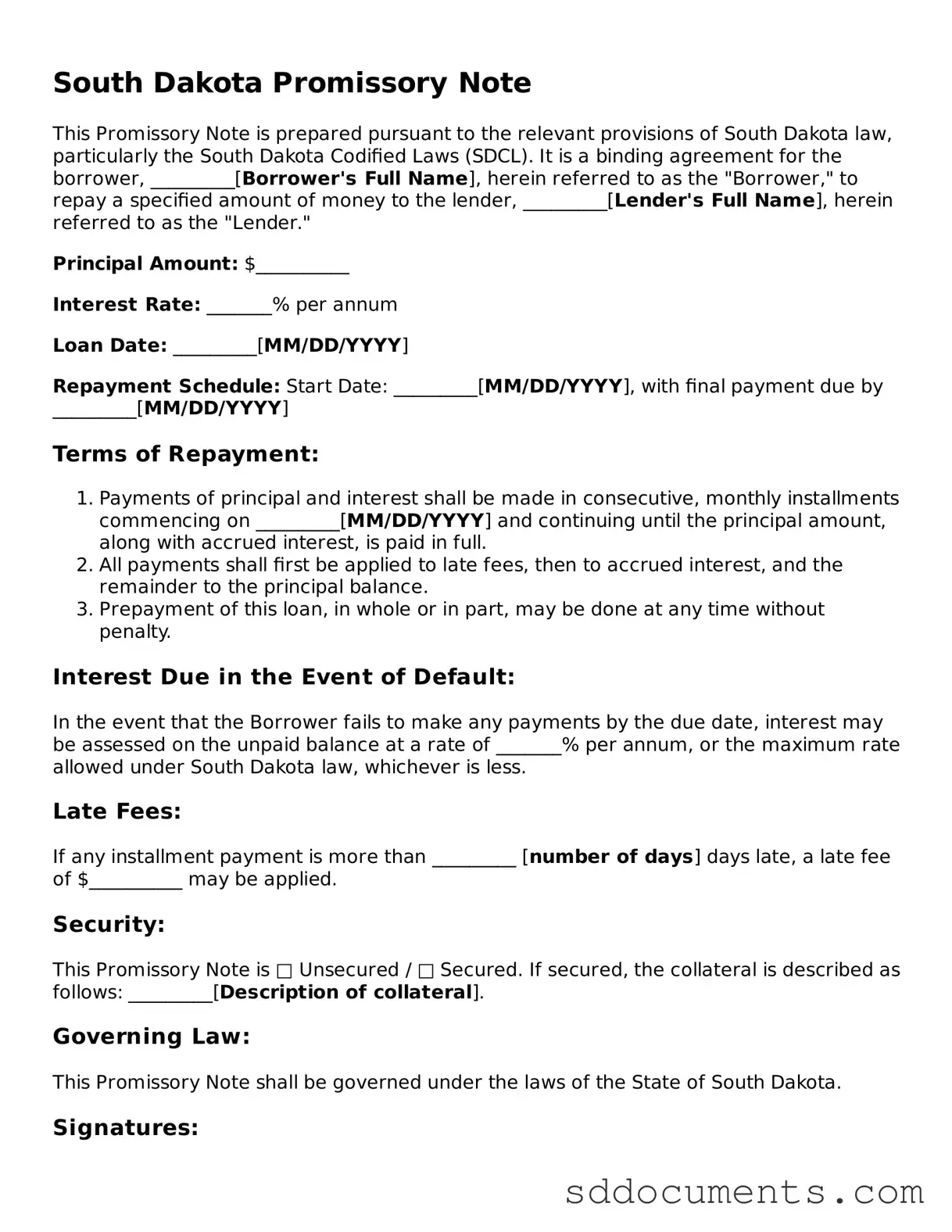Free Promissory Note Template for South Dakota
A South Dakota Promissory Note is a legal document that outlines a borrower's promise to repay a loan to a lender under specified terms. This form serves as a written record of the agreement, detailing the amount borrowed, interest rates, and repayment schedule. To ensure clarity and legal protection for both parties, it is essential to fill out this form accurately.
Ready to create your own Promissory Note? Click the button below to get started!
Customize Document Online
